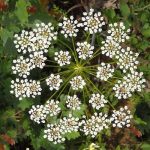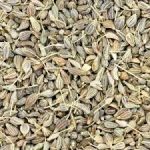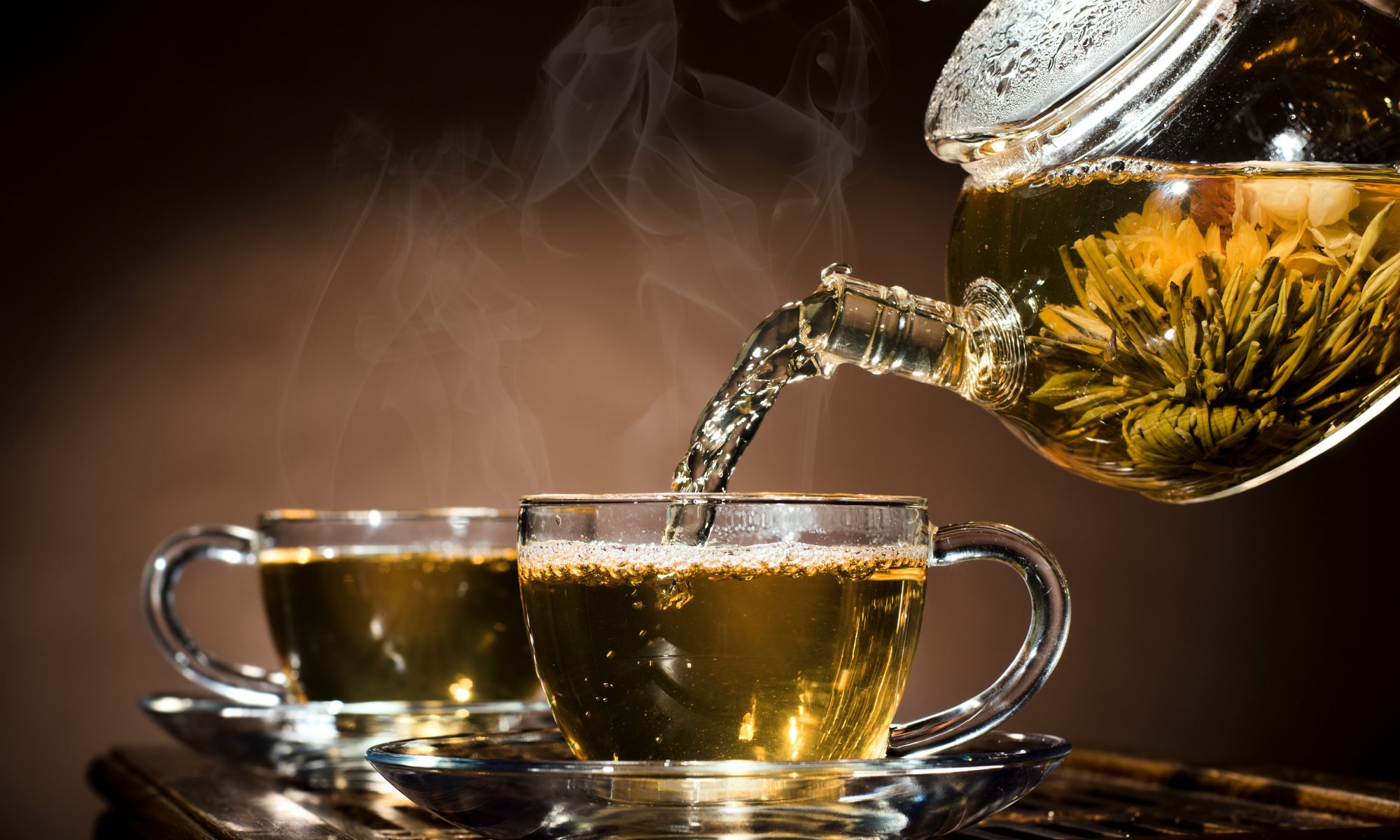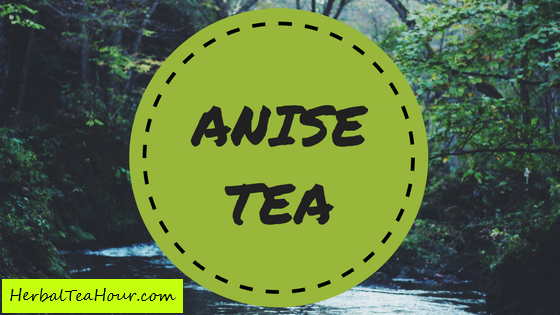ANISE TEA: INTRO
Skip Ahead To:
Herbal teas have increased in popularity recently, and Anise tea is following this trend. Anise tea is a herbal tea made from the flowering plant Pimpinella anisum. The seeds of the Pimpinella anisum plant are primarily used to make tea; however, the leaves are rarely used as well. Anise tea is known for its delicious flavor profile and pleasant aroma. Anise is also commonly used in cooking and to make perfumes and other fragrances. Anise tea is similar to most herbal teas and is extremely healthy. Consuming anise tea has several benefits and positive effects including improved digestion, increased lactation, reduced menstrual cramps, better skin health and improved oral hygiene.
First, as an Amazon Associate, I earn from qualifying purchases.
Anise herbal tea is commonly confused with star anise herbal tea due to their close names and similar flavors. Star anise is actually derived from an evergreen tree found in Vietnam, Illicium verum. You can read more about star anise on my Star Anise Tea Ultimate Guide.
ANISE TEA: ULTIMATE GUIDE

Please note: This post contains affiliate links. An affiliate link means that we may earn advertising/referral fees if you make a purchase through our links.
Anise Flower (Pimpinella anisum)
The anise plant is a perennial flower that is a member of the apiaceae family. This family is primarily known for a few extremely popular species including carrots, celery, and parsley. Anise is traditionally found in the Mediterranean region and southwest Asia, but it is now grown all over the world. The mature plant commonly reaches a height of two feet, and they occasionally can reach a height of three feet tall. The plant typically produces flowers in July-August. These flowers are in an umbrella-shaped cluster called an umbel. The anise seeds, also referred to as aniseed, are produced a month later. Anise seeds feature oblong or curved, comma shape, about 3-4 mm long, light brown color and fine stripes over its outer surface. The seeds contain a natural compound named anethole, which is the reason for most of its health benefits. Anethole makes up around 75-90% of the compounds found in anise seeds.
The Anise plants thrives in loose, aerated, and fertilized garden soil. The anise seeds are usually planted as soon as the ground warms up in spring. Transplanting these plants is not recommended because they produce a taproot. It may be possible to transplant seedlings when they are extremely young, but it commonly leads to dead or damaged plants.This means choosing the correct location for planting is especially important.
Anise Tea History
The name Anise was derived from the early Arabic name for this plant. The Arabic name was Anysum which was translated into the Greek word Anison and the Latin word Anisun. Anise tea known as one of the oldest and most popular ancient teas. The Anise plant (Pimpinella anisum) seeds were extremely valuable in ancient Rome and Greece. The seeds were treated as a precious commodity and were commonly used in trade. They were so valuable that they were often used to pay taxes. The plant has always been used for culinary and medicinal purposes, which makes it perfect for consumption in the form of an herbal tea. Anise tea was primarily used for its carminative properties, which helps reduce gas (bottom burps) and bloating. Experts have studied the tea and estimate it was used in Egypt around 1500 BC. It was also mentioned in ancient Greek texts from this same time period. These ancient Greek texts detail how anise helps improve respiration, reduces mild to moderate pain, and decreases thirst. The Romans originally cultivated this plant in Tuscany. The use of the tea eventually migrated from the Middle east to Central Europe.
Other Historical Uses of Anise Tea
In ancient times, the tea was used for protection from evil spirits. The Romans baked the Anise leaves into a cake that they served during wedding receptions. People also placed the Anise plant on their pillow before going to sleep to eliminate nightmares. The Romans also believed that smelling the pleasant aroma of anise during labor would reduce labor pain, and new mothers consumed a mixture of anise seed, barley, and milk to restore strength.
Anise Tea Uses
As stated above, this tea was traditionally used in Europe to reduce stomach gas, bloating, and flatulence (bottom burps). The tea is still used for this purpose today. Although it has been shown to help babies with colic and small children with digestive issues, recent studies have shown that it might not be safe for infants to consume. Anise is commonly sold as a spice and is commonly included as a flavor enhancing ingredient almost every food category. It is also used to reduce menstrual cramps. Some nurses used the Anise plant as an antiseptic during the Civil War. Unfortunately, it was later discovered that this practice led to a high toxin level in the blood that is potentially lethal. A bonus use of this tea is to combat bad breath, the Anise plant has a sweet aroma. In fact, it has even been used a a natural fragrance in soaps and perfumes.
Anise Tea Health Benefits

Anise tea is an herbal tea with several health benefits. This is a brief description of 10 anise tea benefits. I suggest reading my entire post dedicated to these benefits, Anise Tea Benefits.
Improved Digestion
Anise tea is extremely therapeutic for the digestive system. It displays carminative effects which help improve digestion. Since it enhances digestive features, it is excellent treatment for the digestive problems. Many different cultures consume anise with large meals to help digest the food and prevent nausea. It even has the added bonus of improving bad breath!
Reduced Flatulence, Bloating and Ulcers
Anise tea is effective in reducing stomach gas and bloating. The antispasmodic effects of the anise seeds impact the smooth muscles of the intestine. This impact means that anise tea allows these muscles to relax which relieves gas, bloating and stomach cramps.
Antibacterial and Antifungal
A majority of the anise studies are related to the seed’s antibacterial and antifungal effects. One of the primary studies found a water extract of anise seeds exhibited the highest antibacterial activity against four common bacteria. This included Staph infections, Strep infections, E. Coli, and Klebsiella infections. Anise seeds also can be used to fight yeast and skin fungi such as ringworm.
Relief from Menstrual Cramping and Hot Flashes
Anise tea contains natural compounds that mimic the effects of estrogen. Consuming the tea reduces the intensity and duration of menstrual cramping. A recent study concluded that anise extract used for menopausal hot flashes lead to a significant reduction in hot flash frequency and intensity.
Treatment for Stomach Ulcers
A stomach ulcer, also known as a peptic ulcer, is a lesion or small hole in the gastric lining. The primary cause is the Helicobacter pylori bacterium. Both anise and licorice contain a compound called anethole that inhibits the growth and eventually can eliminate this bacteria.
Lower Blood Sugar
Another study of patients with Type 2 Diabetes found that anise seeds have antidiabetic, hypolipidemic and antioxidant effects. The researchers studied the blood of the study participants. The glucose (sugar) and lipid (fat) levels decreased and antioxidants increased. The same study showed increased levels of Vitamin A and Vitamin C. Coriander seeds had similar effects.
Reduction of Seizures
Anise seeds exhibit anticonvulsant effects which can help reduce the onset & mortality of seizures. A study reported an increased delay in the onset of seizure in the mice which had been pretreated with anise essential oil. It also delayed death more effectively than another anticonvulsant, phenobarbital. Another study were found to delay the onset of picrotoxin-induced seizures and to decrease the mortality rate.
Antiviral Effects
A recent study analyzed the antiviral effects of anise and fennel seeds. The immune stimulating effects of the seeds were studied as well. The research shows that both seeds cause these effects which may help protect against herpes simplex virus types 1 and 2, human cytomegalovirus, and measles virus.
Kills Skin Mites
Anise seeds can control small insects and mites including lice and scabies. Anise seeds can be ground into a paste that is effective in treating and killing lice and scabies. Recent studies have shown that Anise seed essential oils exhibit these insecticidal effects.
Antioxidant Activity
Several studies have reported the strong antioxidant activity of simple water extracts of anise seeds. Anise seeds are effective in fighting free radicals that damage the human body. This improves overall health and wellness, and it also strengthens the immune system.
Anise Tea Negative Effects
Anise tea has many benefits, but it also has possible negative effects at high doses. This is why I always suggest consulting your doctor or healthcare practitioner before consuming any type of herbal tea, including anise tea.
Anise Tea Taste
Anise is sweet and very aromatic, distinguished by its characteristic flavor. It has such a pleasant smell, it has even been used a a fragrance. Most people state that the tea is similar to licorice. its oils are distilled into the flavoring for licorice sweets.
Anise Tea Recipes

The two recipes mentioned below each make one serving of Anise Tea. The first recipe is plain and simple, and the second recipe has some extra ingredients.
Anise Tea Simple Recipe
- 1 Tablespoon of Anise Seeds (Check out my List of Best Anise Seeds for Tea)
- 2 Cups of Water
Step 1
Boil 2 Cups of Water in a tea kettle or pot
Step 2
Crush or Grind 1 Tablespoon of Anise Seeds. You can purchase the seeds already crushed or you can crush them using a mortar bowl.
Step 3
Pour the crushed Anise Seeds into the boiling water. Allow the mixture to gently simmer for 5 minutes.
Step 4
Pour the tea into you desired mug or tea cup, and use a strainer to help remove the plant material. Your Anise tea is now ready, enjoy!
Anise Tea Enhanced Recipe
- 1 Tablespoon of Anise Seeds
- 2 Cinnamon Sticks
- 1/2 Teaspoon of Sugar
- 1 Teaspoon Lemon Juice
- 1 Tablespoon of Honey
- 1 Black Tea Bag
- 2 Cups of Water
Step 1
Use a saucepan to combine all of the ingredients listed above except the Black Tea Bag. Bring the mixture to a low boil.
Step 2
Allow the mixture to simmer for 5 minutes.
Step 3
Strain the mixture and pour the liquid into your desired serving cup or mug.
Step 4
Place the Black Tea Bag into your serving cup and let it steep for 3-4 minutes.
Step 5
The tea is now ready to enjoy hot! Congrats on successfully following this enhanced recipe!
Buy the Best Anise Tea
(Commissions Earned)
Anise Tea: Conclusion
Anise is a very popular tea that has been used for thousands of years to reduce bloating and stomach gas. It has a very sweet taste and is easy to drink. It is a great tea for beginners and has a simple recipe.
Anise Tea Comments
Have you consumed Anise Tea before? Do you have anything to add to this post? Please enhance this community by sharing your experiences in the comments section below.
HerbalTeaHour.com is an herbal tea community that truly values transparency and disclosures. We want to be very clear about one thing. In addition to being herbal tea enthusiasts, we do participate in the Amazon Affiliate program. As an Amazon Associate we earn from qualifying purchases.



I love Anise Tea, and I’m glad that you are spreading the word in such a detailed manner! Maybe we can grow the anise tea following 😉
~Deb